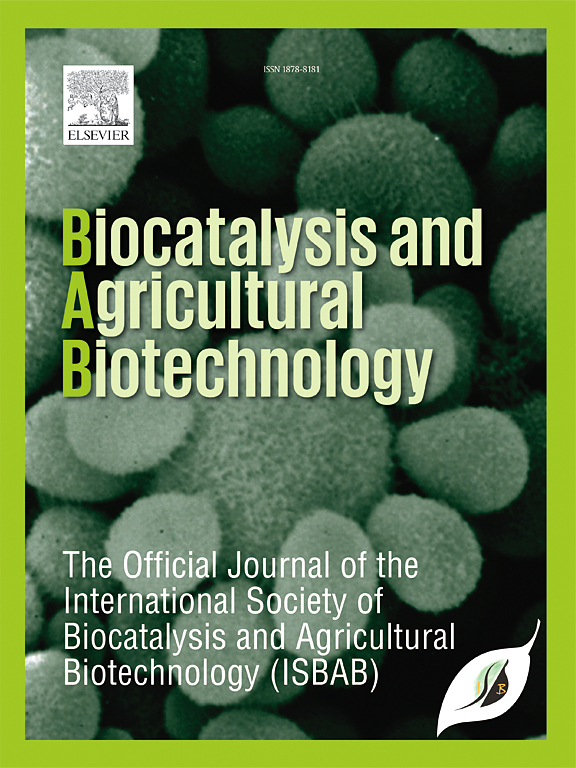Unveiling a novel uronate dehydrogenase from industrial wastewater metagenomes for efficient galactaric acid production in engineered Saccharomyces cerevisiae
IF 3.4
Q2 BIOTECHNOLOGY & APPLIED MICROBIOLOGY
引用次数: 0
Abstract
Galactaric acid is a valuable chemical utilized in the cosmetic and polymer industries. This platform chemical can be produced through a single enzymatic step catalyzed by uronate dehydrogenase (UDH) from D-galacturonic acid, which can be derived from the hydrolysis of pectin-rich feedstock. However, most characterized UDHs have been sourced from cultured microorganisms, leaving a significant gap in our understanding of UDHs from uncultured microbial communities. In this study, we identified and characterized three novel UDHs from the metagenomes of industrial wastewater. Following activity screening, the m2UDH was selected due to its superior enzyme activity in a Saccharomyces cerevisiae host. Through semi-rational protein engineering, the m2UDHT123V variant was generated with 13-fold increase in enzyme activity compared to the wild-type enzyme. Engineered thermotolerant S. cerevisiae expressing m2UDHT123V variants exhibited approximately 2.8-fold higher enzymatic activity and 2.4-fold higher galactaric acid production at 40 °C compared to the wild-type enzyme. Thus, this study highlights the significance of exploring diverse metagenomic environments for enzyme discovery and presents a promising approach for the bioprocessing of pectin-rich feedstocks into value-added biochemicals.

求助全文
约1分钟内获得全文
求助全文
来源期刊

Biocatalysis and agricultural biotechnology
Agricultural and Biological Sciences-Agronomy and Crop Science
CiteScore
7.70
自引率
2.50%
发文量
308
审稿时长
48 days
期刊介绍:
Biocatalysis and Agricultural Biotechnology is the official journal of the International Society of Biocatalysis and Agricultural Biotechnology (ISBAB). The journal publishes high quality articles especially in the science and technology of biocatalysis, bioprocesses, agricultural biotechnology, biomedical biotechnology, and, if appropriate, from other related areas of biotechnology. The journal will publish peer-reviewed basic and applied research papers, authoritative reviews, and feature articles. The scope of the journal encompasses the research, industrial, and commercial aspects of biotechnology, including the areas of: biocatalysis; bioprocesses; food and agriculture; genetic engineering; molecular biology; healthcare and pharmaceuticals; biofuels; genomics; nanotechnology; environment and biodiversity; and bioremediation.
 求助内容:
求助内容: 应助结果提醒方式:
应助结果提醒方式:


